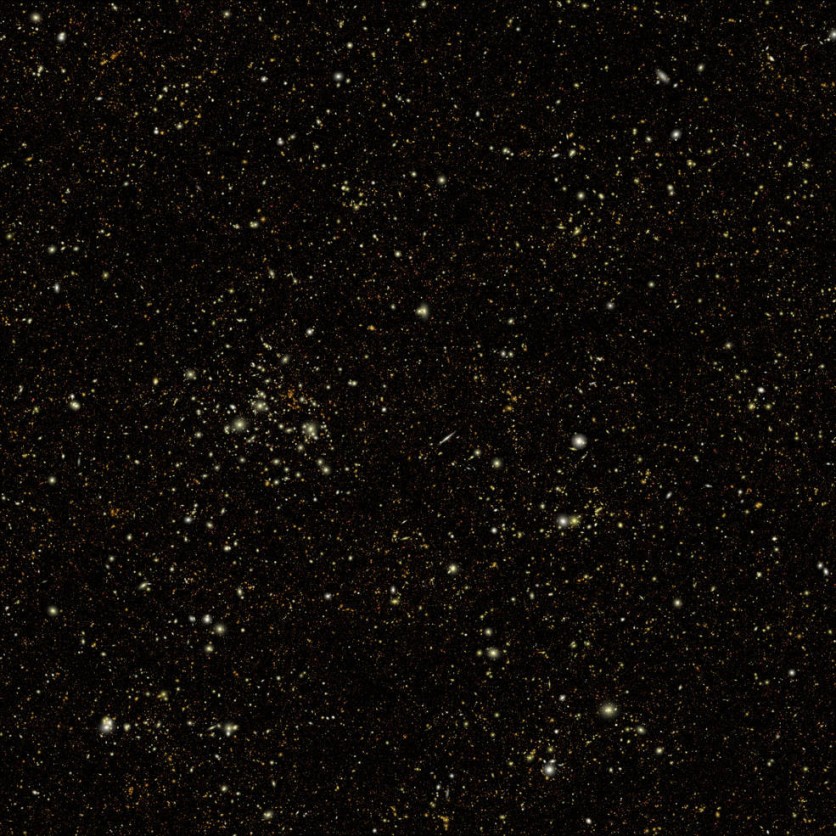A group of scientists has developed a synthetic survey that predicts what the future observations of NASA's Nancy Grace Roman Space Telescope will reveal.
Although it only represents a small portion of the telescope's upcoming survey, this simulation includes an impressive 33 million galaxies and 200,000 foreground stars within our own galaxy.
The purpose of this simulation is to aid scientists in developing the best possible observing strategies and to test various methods of mining the vast quantities of data that the telescope will collect.
It will also provide opportunities to study the benefits of pairing Roman's observations with those of other telescopes.

"The volume of data Roman will return is unprecedented for a space telescope," Michael Troxel, an assistant professor of physics at Duke University, said in a press release statement.
"Our simulation is a testing ground we can use to make sure we will get the most out of the mission's observations."
Roman and Rubin Simulations
To create the simulation, the team drew data from a mock universe initially created to support science planning with the Vera C. Rubin Observatory, which is located in Chile and is scheduled to begin full operations in 2024.
As the Roman and Rubin simulations use the same source data, astronomers can compare the two and determine what they can expect to learn from pairing the telescopes' observations once they are both in operation.
Roman's High Latitude Wide Area Survey will use both imaging and spectroscopy across the same vast swath of the universe.
Spectroscopy involves measuring the intensity of light from cosmic objects at different wavelengths, while the imaging will reveal the precise positions and shapes of hundreds of millions of faint galaxies that will be used to map dark matter.
Even though dark matter is invisible, astronomers can infer its presence by observing its effects on regular matter.
Gravitational Lensing
The distortion of the fabric of space-time occurs with the presence of any object with mass. The degree of distortion is proportional to the mass of the object, resulting in a phenomenon known as gravitational lensing, according to NASA.
This phenomenon causes the light emanating from far-off sources to become distorted when passing through intervening objects. In the case of massive galaxies or galaxy clusters, the background sources can appear as multiple images or be smeared.
On the other hand, weaker lensing effects are created by less massive objects. The Roman observatory will have the sensitivity to detect these weak lensing effects and use them to study how clumps of dark matter distort the appearance of distant galaxies.
Through these observations, scientists will be able to expand our knowledge of dark matter by filling in previously unknown gaps.
The Roman survey spans 20 square degrees of the sky, equivalent to 95 full moons. Rubin's survey will cover 18,000 square degrees of the sky with lower resolution.
Pairing Roman and Rubin simulations will help detect objects in both sets of images and address the difficulties of "deblending" objects in Rubin images.
Roman's survey will allow astronomers to accomplish more than the primary goals, including studying the structure and evolution of the universe, mapping dark matter, and understanding the accelerating expansion of the universe. Scientists can also explore the bonus science from the new simulated Roman data.
Related Article : Nancy Grace Roman Telescope is 1,000x Faster than Hubble in its Broad Space Survey

ⓒ 2026 TECHTIMES.com All rights reserved. Do not reproduce without permission.




